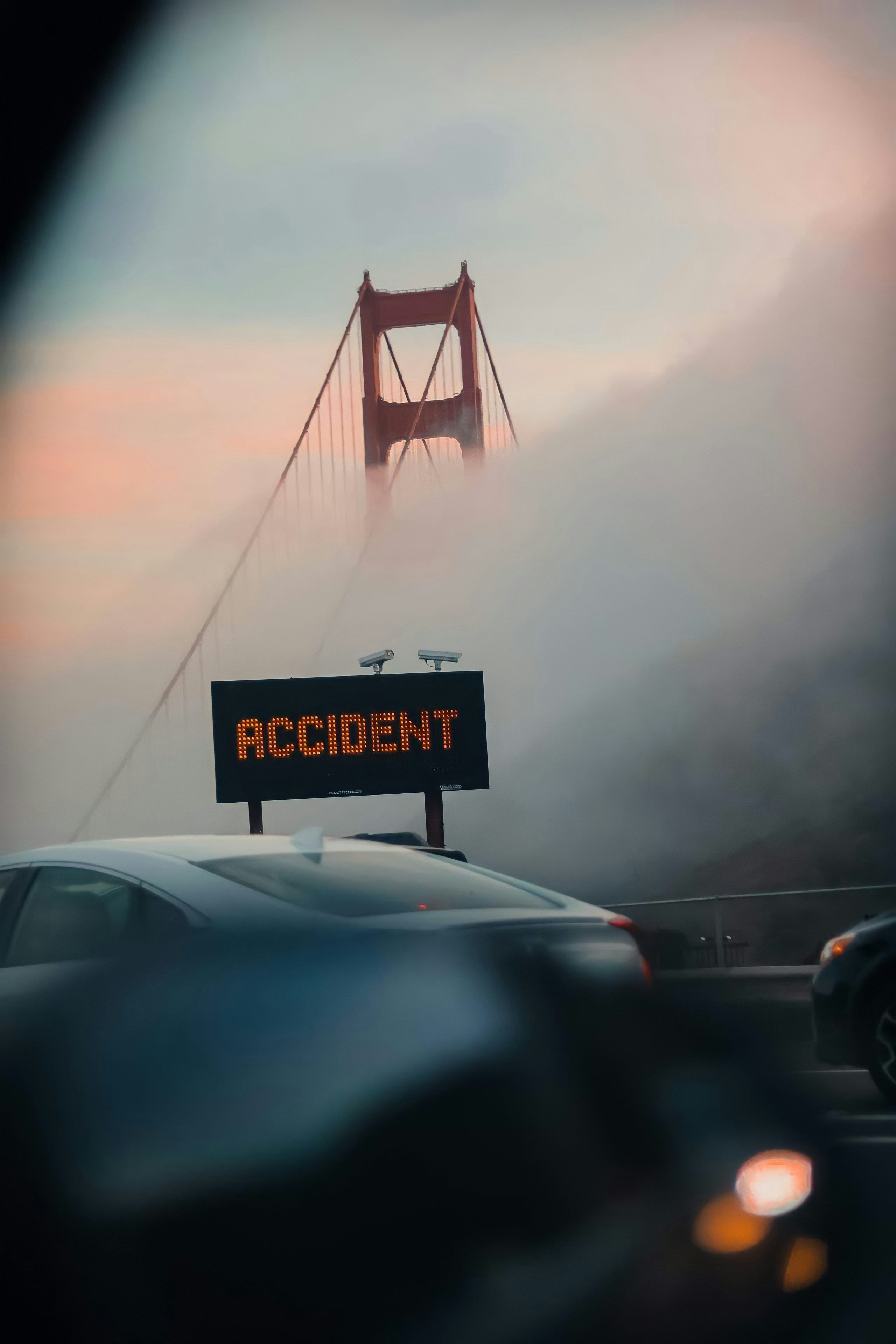Why Your California Car Accident Report is Absolutely Crucial
After the shock of a car accident, navigating the aftermath can feel overwhelming. One of the most critical steps in protecting your rights and starting the recovery process is obtaining the official police report. This document is the cornerstone of your insurance claim and any potential legal action. This guide provides a complete, step-by-step process for getting your California car accident report, clarifying what you need, where to go, and why it's so important.
Why Your California Car Accident Report is Absolutely Crucial
The official report filed by a law enforcement officer is far more than a simple summary of the collision. It is a vital document that serves as the official record of the incident, carrying significant weight with insurance companies and legal professionals. Securing a copy is a non-negotiable step in safeguarding your interests after a crash.
The Foundation for Your Insurance Claim
When you file a claim, your insurance company and the other party's insurer will immediately request the accident report. This document provides the initial, objective details they need to begin their investigation. It outlines the basic facts of the crash, identifies the involved parties and their insurance information, and offers a preliminary assessment from law enforcement. Without this report, the claims process can be significantly delayed as insurers struggle to verify the details of the collision.
Essential Evidence for Personal Injury Lawsuits
If your accident resulted in injuries, the police report becomes a foundational piece of evidence in a personal injury case. It documents the time, location, and conditions of the crash, and often includes the officer's observations about potential causes and any citations issued. This official record helps establish a clear link between the collision and the injuries you sustained, which is essential for proving negligence and pursuing fair compensation.
Providing an Objective Third-Party Account
Emotions run high after an accident, and recollections of the event can differ between drivers. The police report offers an impartial account from a trained law enforcement officer. It typically includes a narrative describing the events leading up to the crash, statements from all involved drivers and witnesses, and a diagram of the accident scene. This objective perspective is invaluable for cutting through conflicting stories and establishing a factual baseline for what occurred.
Documenting Property Damage and Other Losses
The report provides an initial assessment of the damage to each vehicle involved. An officer will note the points of impact and the visible extent of the damage, which helps corroborate the estimates from auto body shops and insurance adjusters. This documentation is crucial for ensuring you are properly compensated for the full cost of repairs to your vehicle and any other property damaged in the collision.
Understanding When an Accident Report is Filed (or Not)
While a police report is always beneficial, law enforcement doesn't respond to every minor fender bender. Understanding when a report is legally required and when officers are likely to file one is key to knowing what to expect after your crash.
When Law enforcement Must Respond and File a Report
In California, police are generally required to respond to and file a report for any accident that involves an injury or a fatality. They will also typically file a report if a driver is suspected of being under the influence of alcohol or drugs, if a vehicle needs to be towed from the scene, or if there is significant public property damage. The presence of these factors usually triggers an official investigation and the creation of a formal collision report.
When a Report Might Not Be Filed
For very minor collisions with no apparent injuries and minimal property damage, law enforcement may not respond or file an official report. If you are in a minor "fender bender" on private property, like a parking lot, police may instruct you to exchange information and handle it through your insurance companies without creating a formal document.
Your Obligation: The SR-1 Report to the DMV
Regardless of whether law enforcement files a report, you have a separate legal obligation in California. If the collision resulted in any injuries (no matter how minor) or property damage exceeding $1,000 for any single party, every driver involved must file a Report of Traffic Accident Occurring in California (Form SR-1) with the Department of Motor Vehicles (DMV) within 10 days. This is your responsibility, and failing to file this document can result in the suspension of your driver's license.
Identifying the Correct Law Enforcement Agency
The first step in requesting your report is knowing which agency created it. Jurisdiction in California can be complex, and the location of the crash determines whether the California Highway Patrol (CHP), a local police department, or a county sheriff's department responded.
California Highway Patrol (CHP) Collision Reports
The CHP has jurisdiction over all freeways, state highways, and unincorporated county roads in California. If your accident occurred on an interstate like the I-5 or a state route like Highway 1, the CHP was the responding agency, and you will need to request the report from them.
Local Police Departments (City Limits Accidents)
If your crash happened on a surface street within the limits of an incorporated city, the local police department for that city handled the response. For example, an accident in downtown Los Angeles would be investigated by the Los Angeles Police Department (LAPD), while a collision in San Francisco would be handled by the San Francisco Police Department (SFPD).
County Sheriff's Departments (Unincorporated Areas)
For accidents that occur in unincorporated areas of a county—that is, areas not within the official boundaries of a city—the county sheriff's department is typically the responding agency. These are often more rural or suburban locations where the sheriff provides primary law enforcement services.
Accidents on Private Property
Accidents on private property, such as a shopping mall parking lot, can be tricky. While a local police department may respond, especially if there are injuries, they sometimes do not file a formal report. In these cases, they may simply facilitate the exchange of information and create a log entry of the incident.
How to Determine the Reporting Agency
The easiest way to determine the correct agency is to look at the information card or incident number the officer gave you at the scene. This document will have the name of the law enforcement agency and a report number. If you don't have this, consider the location of the crash. Was it on a freeway (CHP), a city street (local police), or a rural road (sheriff)? This will point you in the right direction.
Gathering Necessary Information Before You Request Your Report
Before you can submit your request, you need to collect several key pieces of information. Having these details ready will make the process smoother and prevent your request from being rejected.
Essential Details You'll Need
To successfully locate your report, you must provide as much specific information as possible. The most important details are:
- The date and approximate time of the accident.
- The specific location of the collision (street names, cross-streets, or freeway mile marker).
- The names of the drivers involved.
- The police report number or incident number, if you have it.
Who is a "Party of Interest"?
California law restricts access to car accident reports to protect the privacy of those involved. You must be a "party of interest" to obtain a copy. This includes:
- Any driver or passenger involved in the crash.
- A registered owner of an involved vehicle.
- A parent or legal guardian of a minor involved in the accident.
- An authorized representative, such as an attorney or an agent from your insurance company.
Required Identification for Requestors
When you submit your request, whether online, in person, or by mail, you will need to prove your identity and your status as a party of interest. This typically requires a valid, government-issued photo ID, such as a driver's license or passport.
Step-by-Step Guide: How to Request Your California Accident Report
Once you've identified the correct agency and gathered your information, you can formally request a copy of the report. The process varies slightly depending on the department.
Requesting a CHP Collision Report (CHP 190)
The CHP makes it relatively straightforward to request a report. You must complete a Collision Request (Form CHP 190). You can submit this form in two ways:
- By Mail: Mail the completed form and a check or money order for the fee to the CHP office that handled the investigation.
- In Person: Visit any local CHP office. You can submit your form and payment there, and they can process the request even if a different CHP office wrote the report.
Requesting a Local Police Department Report
Most local police and sheriff's departments have their own unique procedures. Many large departments, like the LAPD, use a third-party online portal to manage requests. For others, you may need to visit the department's records division in person or mail in a specific request form found on their website. Always check the website of the relevant local department for their exact instructions.
Understanding Request Forms and Fees
Nearly every agency requires a specific form to be filled out. These forms ask for the details of the accident and require you to state your relationship to the collision to prove you are a party of interest. There is almost always a nominal fee for a copy of the report, which typically ranges from $10 to $25.
The Difference Between Electronic and Paper Submissions
Many agencies are moving toward electronic submissions through online portals, which can be faster and more convenient. You can often pay by credit card and receive a digital copy of the report via email. Paper submissions via mail or in-person visits are still available but may take longer to process due to mailing times and manual handling.
What Information is Contained in a California Accident Report?
A California accident report is a dense document filled with critical information. Understanding its layout and the significance of each section can help you and your representatives build a strong case.
Key Sections and Their Significance
A standard report includes:
- Face Page: Basic information, including the date, time, location, driver and vehicle details, and insurance information.
- Narrative: The officer’s written summary of the events, based on their observations and investigation.
- Diagram: A drawing of the accident scene showing the positions of the vehicles before, during, and after the crash.
- Witness Statements: A summary of what any independent witnesses saw.
- Violations: A section indicating if any traffic citations were issued to a driver, which can be a strong indicator of fault.
Understanding Timelines, Delays, and Expectations
Obtaining your report is not always an instantaneous process. It's important to have realistic expectations about how long it will take and to be aware of potential issues that could cause delays.
Typical Processing Times (Business Days)
After an accident, it can take the investigating officer several days to finalize and file their report. Once the report is available, processing your request can take anywhere from a few business days to several weeks, depending on the agency's backlog and your method of request. Online requests are often the fastest.
Common Reasons for Delays and Denial
Your request may be delayed if the report is not yet complete, if the investigation is ongoing (especially in cases involving serious injuries or criminal charges like a DUI), or if the information you provided on your request form is incomplete or inaccurate. A request can be denied if you are not a "party of interest" or fail to provide proper identification. If your request is denied, the agency should provide a reason.





